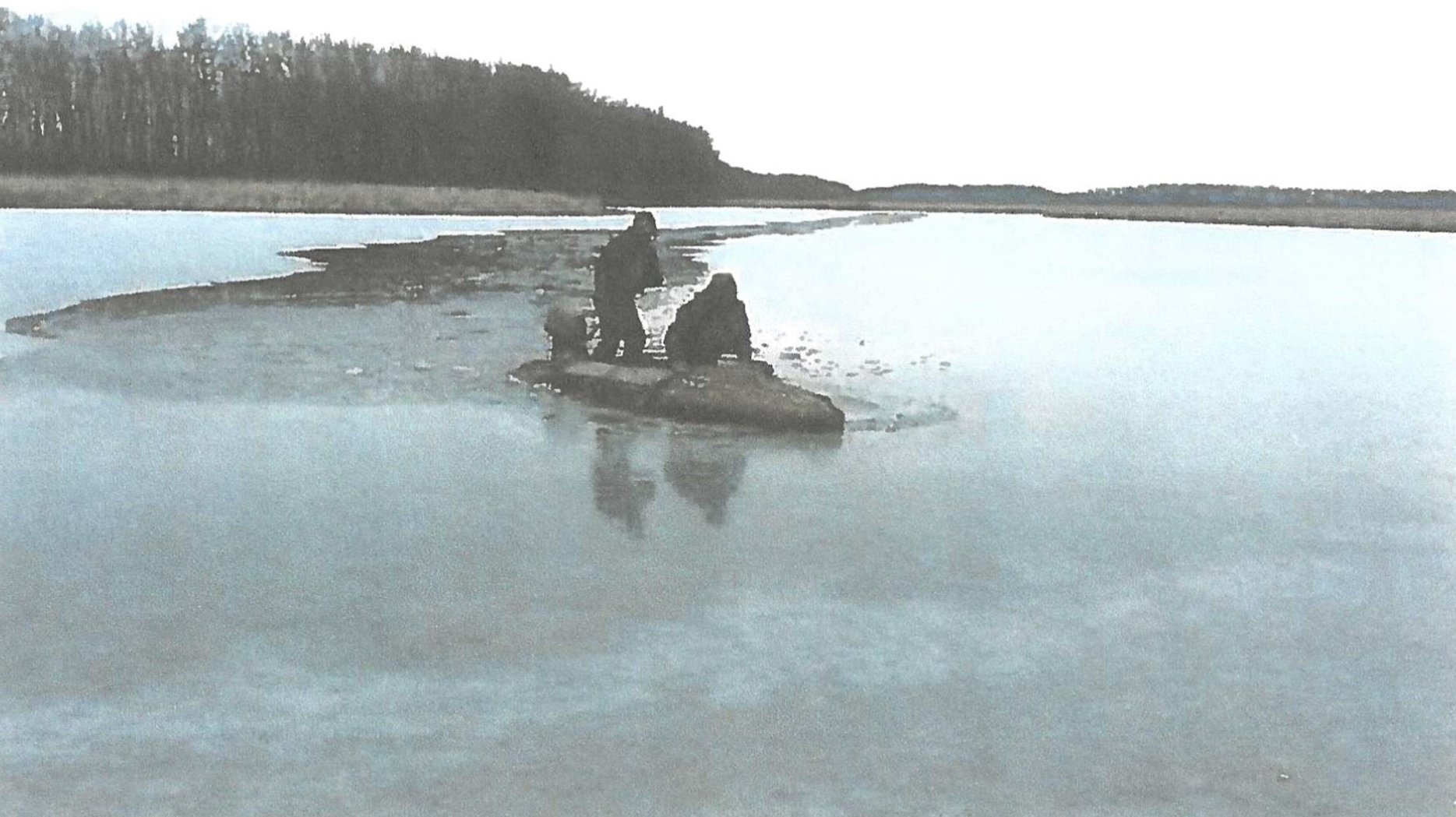How to Break Ice
by Ron Sineo
I first wrote this article for the newsletter over 15 years ago. Every 3 years or so, we re-print this to caution our members to be safe, and to live to hunt another day.
One of our members suggested that it would be a good idea to discuss how to break ice when you are in a duck-hunting skiff. We all know that the birds are concentrated when there is ice everywhere, so how do you get through this ice safely? Attempting to do research on this matter, I consulted with http://www.waterfowler.com and I got over 2 dozen responses. Mostly, they were from guys from Michigan, and Minnesota, and other big water, cold weather states. In summary, here is what they had to say:
1. Never try to break serious ice when you are alone! (Serious ice is anything thicker than that clear "skim" ice)
2. With one man in the bow (for weight), go slowly, and ride the bow onto the ice, letting the weight of the boat break through it, stop the boat long enough to allow the bow man to use a paddle or iron bar to break up the big pieces on the sides of the boat.
3. Ride the boat slowly up onto the ice again, and repeat this process.
4. As the ice approaches 1-1/2 inches thick, the weight of the boat alone may not do it. Then the bow man must work at a slow even pace to crack and break the ice in front of him. This is very strenuous work. It should never be done in haste because there are no do-overs. Life vests should be worn! and the bow man must be careful not to reach too far or hang over too far. Falling through ice can be a one-way trip.
5. If the ice is thicker than 1-1/2 inches or so, it is probably better to put the boat back on the trailer and go get a cup of coffee at the diner! No duck is worth your life!
6. If you are at the launch ramp, and you need break more than about 200 feet of ice to get to open water, don't launch the boat….it just isn't worth it.
7. If you plan on staying out a while, you need to be concerned about the trip back. On a really cold day, the broken ice will seal up behind you rapidly, and become even thicker than it was before. It is wise to take your time and clear the ice as thoroughly as you can. Break the huge floating chunks into smaller pieces, using your paddle or iron bar, and clear a path that is somewhat wider than the boat. When you have gotten to open water, turn the boat around and go back through the path you have cleared. This will give you a good sense of how fast the ice is reforming. If you need to break ice on your way back, you should probably pull your boat out of the water, because it will surely be all locked up, by the time you planned to return.
Almost all of those who responded cautioned that this is only the beginning of "ice safety". They were quick to point out that whenever you are hunting in a tidal flow, moving ice can be very dangerous. Most of the time, there is more ice below the waterline than there is above it.The force of the currents is not to be fooled with. Fiberglass and homemade duck boats are no match for tidal and current driven ice, and hulls can be pierced in a blink. Don't think that aluminum johnboats will fare much better, either. What often begins as a simple chore to retrieve some decoys that have been picked up by the moving ice, can quickly escalate into a bad situation! Locally, we have regular tide changes.
You can be stooled out in a "clear" spot for a couple of hours, when suddenly the tide reverses, and the ice flows begin.
It is the smart hunter who knows when to call it quits for the day.

